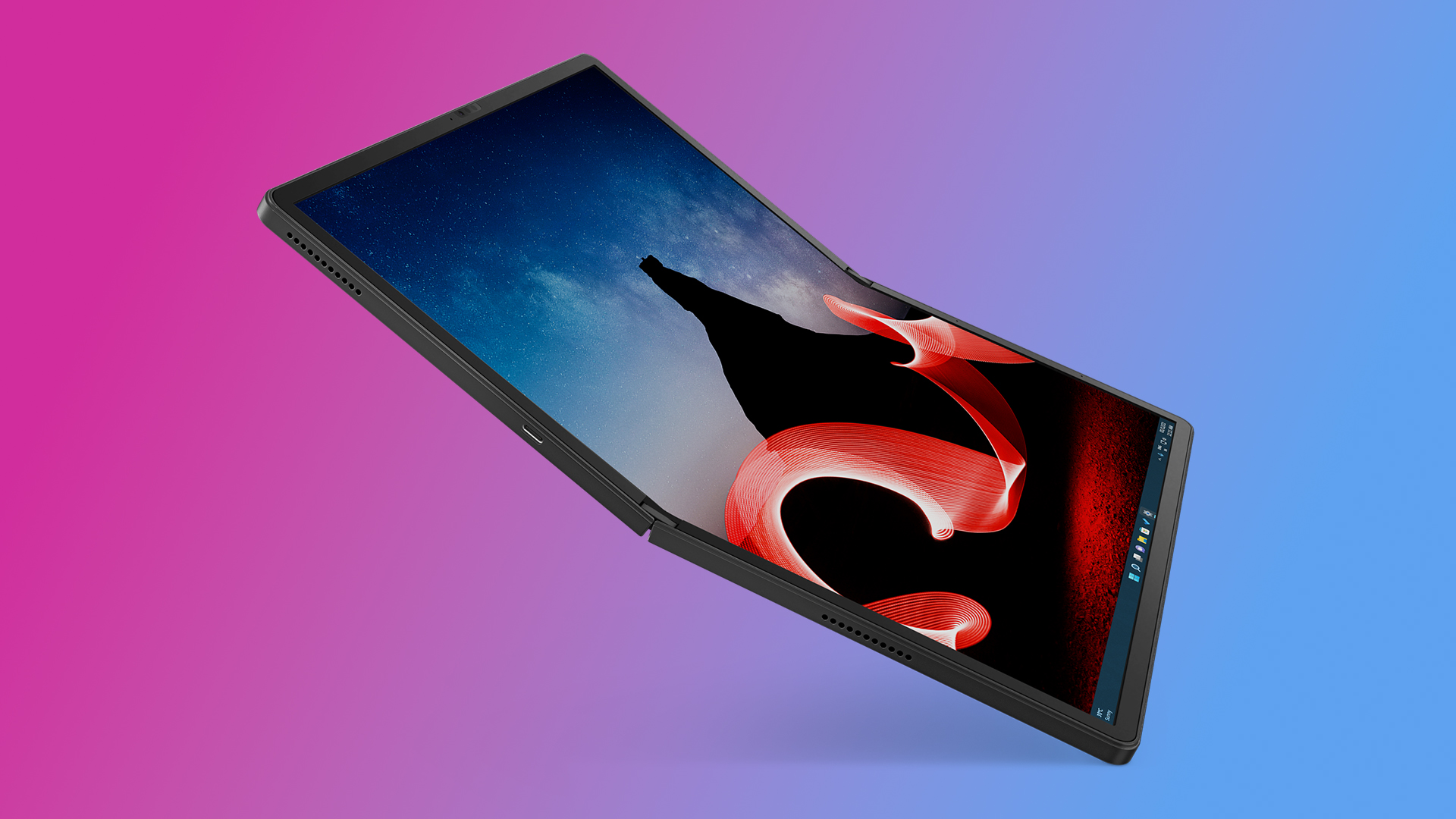The new Lenovo ThinkPad X1 Fold is bigger, faster and stronger — but there's a catch
The next generation is going big

The new Lenovo ThinkPad X1 Fold is here and bigger than ever — making the size leap from a small 13.3-inch display to a massive 16-inch panel.
With prices starting at $2,499, it’s certainly not cheap, but if you’re in the market for a laptop with a foldable display, you knew this was a risk already. That high price doesn't mean it isn't worth the investment, but there’s a chance it could be an experimental flop.
What makes it tick?

So, as you read up above, the big selling point for the new X1 Fold is the big screen: a 16.3-inch OLED panel with a 4:3 aspect ratio, a 2024 x 2650-pixel resolution, 600 nits of peak brightness, Dolby Vision and a 100% DCI-P3 color gamut. Plus, it features a touchscreen and pen support, making it a great big canvas for creative projects.
Because of the larger screen, Lenovo had to redesign the hinge, which results in a bell-shaped system that is smaller, more durable, and it allows you to fold the panel flat in both its open and closed positions.
With the benefit of a bigger display, the X1 Fold is able to take full advantage of the versatility afforded to it — made all the easier by an intuitive Mode Switcher interface. Using it in a classic clamshell laptop mode means the top display half is 12 inches, which is noticeably bigger than what you could get in the 13.3-inch full-size display of the previous X1 Fold.

Meanwhile, the landscape mode paired with the kickstand resembles a desktop/portable monitor hybrid, portrait mode would be great for reading/editing long documents, book mode is obviously a dream for consuming written content on a device this big, and finally, the tablet mode is pure big screen binge-watching joy.
As for the internals, you’re looking at up to a 12th Gen Intel Core i7 U-series chipset with integrated Intel Iris Xe graphics, up to 32GB LPDDR5 RAM and a 1TB PCIe Gen 4 SSD.
Sign up to receive The Snapshot, a free special dispatch from Laptop Mag, in your inbox.
Now, battery life sucked on the previous X1 Fold with a 50Wh cell, and worryingly, with a 48Wh battery (going up to 64Wh in different configurations), along with more powerful internals and a larger screen, this could be just as bad. We'll have to hope that the move to Intel 12th Gen solves for this due to the smaller 7nm process and the new hybrid architecture, which we have seen deliver superior results in other laptops.
Outlook

So, all in all, this is a strong showing for a big-screen foldable that not many people will buy. But that’s always been the case with these systems: big eye-catchers to get your attention in the sea of IFA 2022 announcements.
Its closest competition comes in the form of the Asus ZenBook 17 Fold, which packs a bigger screen and battery. In terms of how these compare, we’ll leave that until we’ve had some proper hands-on time with both.
But a $1,000 saving by opting for Lenovo is quite the tempting prospect for anyone who wants that full foldable laptop experience without emptying their bank account in these tough economic times.

Jason brought a decade of tech and gaming journalism experience to his role as a writer at Laptop Mag, and he is now the Managing Editor of Computing at Tom's Guide. He takes a particular interest in writing articles and creating videos about laptops, headphones and games. He has previously written for Kotaku, Stuff and BBC Science Focus. In his spare time, you'll find Jason looking for good dogs to pet or thinking about eating pizza if he isn't already.
